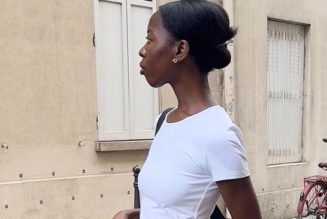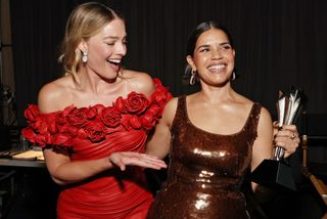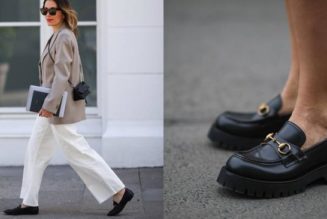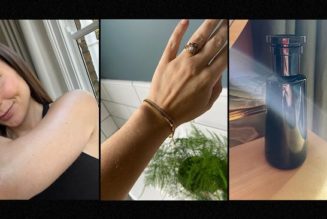There was a time when luxury brands were all about hefty price tags and exclusive clubs. Thankfully though, we live in the era we define as “New Luxury,” where it’s all about the story behind the glitter and the true craftsmanship that separates luxury fashion from everything else.
In this world, luxury brands aren’t just selling products; they’re offering pieces with a journey, a soul, and a story that resonates with your own culture.
In this refreshing wave of luxury brands and high-end designers, it’s not about flashing labels anymore. It’s about rocking a piece from a luxury brand that says more about you than just your bank balance. It’s the difference between wearing a random luxury sneaker and one from a new luxury brand with its unique story that resonates with the person wearing it.
Luxury brands are now redefining value, not by price tags but by their products’ cultural journeys. Engaging with them today isn’t just about walking into a store and picking something off the shelf; it’s about becoming part of a narrative, a cultural exchange where every item from these luxury brands represents something beyond its price point or appearance.
From OG fashion houses to up-and-comers, step into this new world of luxury brands to know in 2024.
Acne Studios

Acne Studios, originating from Stockholm, is by far one of the most successful and recognizable luxury brands in fashion right now. Yet, simply calling Acne Studios clothing “minimalistic” does not tell the whole story.
The brand’s co-founder and creative director, Jonny Johansson, coining the term “maximalist minimalism” to describe his designs, is not only a perfect explanation of the designs of the brand, but it is also of the feeling given to anyone who wears Acne Studios pieces.
Acne Studios creates juxtaposition, their collections are contemporary yet classic, essential but often eccentric, and always experimental in nature.
The brand’s thoughtful proportions, bold color palettes, custom-made fabrics, and the brand’s face motif have become the luxury backbone of closets worldwide over the past two decades.
Dries Van Noten

Born into a family of tailors, Dries Van Noten, the Belgian designer, inherited a passion for clothing and translated it into fashion design of the highest quality.
Dries Van Noten is synonymous with eclectic elegance.
Known for his use of vibrant prints, rich textures, and layers, the Belgian designer creates pieces that are both artistic and wearable. Often featuring a mix of florals, and geometric patterns, wearing Dries Van Notes is a statement in itself.
The surprising union of Stüssy x Dries Van Noten has surely put the brand on the contemporary shortlist, and by continuing to mix his traditional tailoring with modern streetwear codes, he proves once gain he can deliver an exciting collection to drool over.
Ultimately, Dries Van Noten has created one of the most authentic, honest, and boundary-pushing luxury brands in the fashion business, all the while staying away from the frenzy of growth and expansion.
BODE

In just a few years, BODE has evolved into a cultural force in American luxury menswear.
Founded by Emily Bode in 2016, the designer’s eponymous brand quickly built a devoted following, and picked up critical acclaim along the way (including nods by the LVMH prize and CFDA award).
In 2018, Emily became the first woman to show a collection at New York Fashion Week Men’s.
Beautifully nostalgic, romantic, and, most importantly, hyper-wearable, the American luxury clothing brand is lauded for its imaginative repurposing of vintage fabrics. Tailor-made in New York and New Delhi, BODE’s clothing is cut from antique textiles, quilting, grain sacks, and bed linens, and features design embellishments like embroidery and patchwork.
BODE’s sustainable approach to design merges traditional craftsmanship with modern silhouettes.
The brand’s multifaceted design philosophy comes to life in pieces like vintage denim jackets with hand-stitched detailing, a revamped 1950s merino wool cardigan, or a senior cord oversized workwear jacket with hand-drawn illustrations. This love for historical techniques can be attributed to Emily’s childhood quilting, antiquing, and vintage shopping with her family.
With BODE, the designer hopes to preserve not just the culture she was raised in but also the cultures that shape her life and the lives around her.
Marni

Following Consuelo Castiglioni’s departure as the founder and creative head of the Milan-based Marni, Francesco Risso’s arrival in 2016 marked a new era. While maintaining Marni’s signature vibrant prints and colors, Risso infused his distinctively playful and bright touch. This brought about a renewed maximalism that emphasizes the individuality of those donning the brand’s attire.
Marni has been a trailblazer not only in design but also in digital innovation. With the 2006 debut of the Marni Virtual Store, the brand was among the first luxury labels to embrace e-commerce, bringing fashion to our screens in an era still dominated by boutique shopping. This online platform also showcased Marni’s numerous collaborations, including those with Carhartt WIP and UNIQLO.
The essence of Marni’s designs and collections is one of delightful surprises, with a playful and unorthodox approach to fashion. Their commitment to craftsmanship, eccentric eclecticism, and mastery in the art of layering continues to define the brand.
Bottega Veneta

Originally established in 1966 by Michele Taddei and Renzo Zengiaro, Bottega Veneta, which translates to “Venetian Workshop” or “Venetian Atelier,” is a high-end Italian label known for its exquisite leather goods and accessories.
Bottega Veneta is renowned for its “intrecciato” leather, a meticulously hand-woven technique forming a textured checkerboard pattern on leather or suede, and has expanded its expertise to include complete fashion lines for men and women.
Bottega Veneta is one of those luxury brands focusing on an understated approach to luxury, terming it as an embodiment of “stealth wealth” – a discreet indulgence in luxury without overt display.
Unless you are Asap Rocky and you are being appointed by the brand to sneakily showcase their new collection by wearing it while paparazzi take pics of you – in that case, there’s nothing “quiet” about it.
Martine Rose

Whatever your taste in fashion, Martine Rose is a name that brings everyone together.
An enfant prodige of British fashion, the Anglo-Jamaican designer has made her mark with menswear contaminated by punk and rave subcultures, a talent that has earned her the title of best British Menswear Designer at the 2023 Fashion Awards, and subsequent success on a global scale. But also “I’m not used to being a winner, I’m used to being an underdog,” Martine Rose told Highsnobiety after she received the award.
Safe to say, Martine Rose might need to get used to being a fan favorite from now on.
Lemaire

Another entry in the world of understated elegance is Lemaire.
Christophe Lemaire and Sarah-Linh Tran compare their recent collections to an onion. Intending to cater to the current need for protection and comfort, they layer their characteristic relaxed tailoring with wafer-thin, second-skin pieces that’ll help you master transitional weather.
With a focus on fine fabrics and subtle details, Lemaire is perfect for those who appreciate minimalism with a touch of luxe refinement.
Jean Paul Gaultier

Jean-Paul Gaultier, often referred to as the enfant terrible of fashion, has been a transformative force in the industry, reimagining beauty and challenging gender norms with a boldness and irreverence that’s impossible to overlook. He is widely regarded as the favorite designer among his peers.
Since 1993, the Gaultier fashion house has expanded into fragrances, starting with the iconic perfume-busts Classique and Le Mâle. This line also includes Fragile, the unisex Gaultier², Fleur du Male, and Ma Dame, all bearing Gaultier’s distinctive touch. These fragrances have been bestsellers and captured the public’s imagination with their unique sculptural bottles shaped like male and female torsos, presented in canning tins.
Gaultier’s runway shows have been nothing short of spectacular, overturning conventional norms by deconstructing gender, blurring lines between femininity and masculinity, and amalgamating various cultural and fashion references globally. From his rise in the 1980s to his last fashion show in 2020, Gaultier has been a prominent figure in French and international fashion.
Now, in his seventies, Jean-Paul Gaultier may no longer be fashion’s enfant terrible, but he certainly remains its eternal prodigy.
Jacquemus

A celebrity magnet, Jacquemus brings the charm of the French countryside to high fashion.
In today’s fashion landscape, Jacquemus stands out with its distinctive French essence, combining Simon Porte Jacquemus’s personal story and the rich artistic, touristic, and fashion heritage of South France.
Starting in 2009 as a tribute to his late mother, Simon Jacquemus, with minimal formal training, gained recognition through unique tactics and eventually earned accolades like a special award at the LVMH Prize.
His collections, known for their Provencial romance and luxurious understatement, include oversized shirts, raffia hats, knitwear, workwear, and leather accessories, evoking happiness and optimism.
Influenced by various French styles and eras, Jacquemus has become a renowned name in fashion, especially with the viral Le Chiquito bag, symbolizing the brand’s ascent to fame and a diverse, devoted following.
Kenzo

KENZO clothing, known for unifying fashion cultures, first captured hearts with its iconic Tiger print tees and sweaters, a favorite among celebrities and fashion enthusiasts for its luxury quality at affordable prices. The brand, characterized by bold colors and minimalist designs, offers versatile pieces that enhance any outfit. Under new head designer NIGO, KENZO continues to innovate with streetwear-friendly items like flower prints, boxy shirts, and loose cargo pants.
Founded by Kenzo Takada in a Paris boutique in 1970, KENZO quickly gained international fame, expanding globally within a year and later adding men’s clothing and fragrances. Now part of LVMH since 1993, KENZO maintains its harmonious design philosophy. With NIGO’s 2021 appointment, the brand embraces a new era, featuring the boke flower motif in a nod to Kenzo’s floral passion, while preserving the joyful, colorful essence of the original designs.
NIGO’s vision for KENZO combines the past and future, evident in oversized shirts, graphic hoodies, and cargo pants crafted from Japanese cotton twill, all showcasing the vibrant boke flower print. This approach reinforces KENZO’s legacy as a brand that offers a “real wardrobe for the future,” rooted in timeless style and exuberant optimism.
Saint Laurent

Established in 1961, Yves Saint Laurent stands as a pivotal name in 20th-century fashion history. Initially launched as a Haute Couture house, it transformed the fashion landscape in 1966 by pioneering the production of luxury clothing beyond exclusive collections, thereby reshaping the interplay between fashion and society.
From its inception, Yves Saint Laurent has exerted a profound influence both within and beyond the fashion world. The brand’s founder, Yves Saint Laurent himself, emerged as a seminal designer and a defining figure of the 20th century.
Characterized by its revolutionary and prestigious nature, key elements of its identity, this Maison set new benchmarks in the fashion industry. Today, thanks to its distinctive identity and timeless codes, Saint Laurent continues to be one of the most esteemed and recognized names in fashion.
Loewe

Loewe currently holds the title of Spain’s most renowned luxury brand, consistently impressing with its flawless approach.
The brand is celebrated for its fusion of traditional craftsmanship and innovative design. Loved by celebrities,and offering weirdly successful products like their hybrid boot-pants, Loewe’s expertise is particularly evident in its outstanding leather goods and artistically crafted ready-to-wear collections.
And just for clarity, it’s pronounced ‘LO-WEH-VAY’. Now you know.
Maison Margiela

Maison Margiela, both past and present, stands as a pivotal figure in fashion, renowned for its deconstructivist designs and meticulous tailoring. This fashion house has cemented its status in avant-garde fashion through its ability to emotionally and culturally reinterpret classic garments.
Founded in 1988 by Martin Margiela, the brand emerged as a response to the era’s overdesigned fashion, blending detailed craftsmanship with a deconstructed style. This approach continues today, manifested in imaginative and sometimes ironic designs, with the iconic reverse boxed stitching symbolizing subtle confidence and exclusivity.
At its heart, Maison Margiela prioritizes clothing craftsmanship, particularly evident in its men’s ready-to-wear collections. These collections showcase high-quality staples, outerwear, and knitwear that are constantly evolving and flawlessly fit the body, underscoring the brand’s enduring commitment to superior tailoring and innovative design.
Séfr

Launched in 2016 by Per Fredrikson and Sinan Abi, Séfr has rapidly carved out a niche in the fashion world, gracing the racks of prestigious retailers globally. The Swedish brand‘s ascent has been achieved without the reliance on extensive media coverage or social media trends, instead allowing the quality and appeal of its clothing to speak volumes.
Embodying the essence of Scandinavian design, Séfr is renowned for its meticulously crafted garments using premium fabrics, coupled with a meticulous attention to detail. The menswear luxury label showcases an expansive array of classic attire, each piece enhanced by innovative twists and unique textures, ranging from refined tailoring to intricate lace shirting.
Marine Serre

If you were wondering which brand created the moon prints you’ve seen everywhere in recent years, the answer is Marine Serre.
Serre’s vision for the brand is deeply rooted in addressing environmental concerns through fashion, emphasizing the use of recycled fabrics and sustainable production methods. Her approach to design is a refreshing mix of practicality, avant-garde style, and a keen awareness of the industry’s environmental impact, making Marine Serre not just a brand but an elegant yet sustainable statement in the fashion narrative.
Jil Sander

Jil Sander, hailed by The New York Times as “The Queen of Less,” has been a trailblazer of minimalism in fashion since 1968. For over five decades, her understated style has greatly influenced Scandinavian and German fashion, reshaping the industry’s landscape.
However, her label has experienced turbulent times: it was acquired by Prada in 1999, but Sander’s sudden departure six months later plunged the company into chaos, leading to a sharp decline in sales and mass resignations among its production and design staff.
Sander briefly returned to her eponymous brand in 2003, only to leave again in 2004 due to irreconcilable differences with Prada’s CEO, Patrizio Bertelli. Prada then brought Raf Simons on board to lead the brand.
After Simons’ departure for Dior in 2012, the label maintained a steady trajectory without a high-profile creative director, until Lucie and Luke Meier, a husband-and-wife team, took over in 2017. In 2021, the brand was acquired by Only The Brave, coinciding with the release of its attention-catching Arc’teryx collaboration.
In the meantime, Jil Sander founded her own consultancy, most notably collaborating with Uniqlo on their +J collections, or Birkenstock in 2023, marking another significant venture in her illustrious career.
Trussardi

Trussardi has consistently been at the forefront of contemporary culture, gaining acclaim through its collaborations with influential artists, designers, and celebrities. These partnerships have not only demonstrated the brand’s adaptability but have also established it as a fashion industry trendsetter.
Trussardi’s influence extends from Milan to the global stage, harmoniously blending heritage with modern style, showcasing its historical richness while moving towards a promising future.
Founded in 1911 by Dante Trussardi as a luxury glove manufacturer in Bergamo, Italy, the brand quickly became synonymous with exquisite craftsmanship and luxury, initially captivating clients with its elegant leather gloves.
Under the guidance of Nicola Trussardi, the founder’s grandson, the brand evolved from a family-run glove business into a versatile fashion empire, expanding into leather goods, accessories, and ready-to-wear collections. Gaining international recognition in the 1970s and 1980s, Trussardi became an emblem of Italian luxury, with its iconic greyhound logo symbolizing its unique identity.
Throughout its journey, Trussardi has skillfully balanced tradition and innovation, integrating new materials, technologies, and contemporary designs while preserving its artisanal heritage. This successful fusion has continually attracted a wide range of fashion enthusiasts, solidifying Trussardi’s status as a timeless icon in the fashion world.
MCM

MCM bursts onto the fashion scene with its iconic logo and luxurious leather goods. This German brand combines a youthful spirit with classic craftsmanship, offering a range of bold and stylish backpacks, luggage, and accessories. MCM’s history is truly one of a kind.
The 1980s saw MCM’s expansion to 250 stores worldwide, becoming a favorite of celebrities like Diana Ross. It also became a staple in emerging hip-hop subcultures, with bespoke fashion designer Dapper Dan incorporating MCM designs for hip-hop artists, adding to its cultural significance.
In 1996, a famous ad featuring Cindy Crawford marked MCM’s popularity, surpassing even Louis Vuitton in Germany. The brand’s evolution continued with collaborations like the “MCM New York” collection in 2009, designed by Joy Gryson and featuring rich details and a Neoclassic aesthetic.
In 2019, a collaboration with BAPE combined streetwear and luxury, and a documentary highlighted MCM’s impact on hip-hop fashion. By 2021, MCM continued to support the arts with the opening of KÖNIG SEOUL and launched a signature fragrance, embodying the brand’s travel heritage.
MCM is perfect for the trendsetter who loves to make a statement while appreciating the finer details of quality and design.
After several previews and hints, MCM unveiled its much-anticipated collaboration with Crocs. This marks MCM’s inaugural collaboration with the famous footwear brand, and the enduring appeal and innovative collaborations pave the way for its continued influence in fashion.
Missoni

Renowned as the master of Italian knitwear, Missoni stands out as an iconic Italian clothing brand with a distinct aesthetic. Established in 1953, it continues to thrive as a family-run business.
Missoni is celebrated for mastering the zigzag pattern, and its vibrant, multicolored scarves have become essential for aficionados of classic style. The brand is also noted for its elaborate and stunning knits that span the entire color spectrum.
While Versace dazzles with color and glamour, Missoni skillfully uses similar elements to create visually striking designs.
For those who love to feel and inspect fabrics closely, allow me a word of caution: stepping into the Missoni section could be an entrancing experience you might find hard to leave.
Our Legacy

Being an Our Legacy enthusiast is always rewarding.
This Swedish label, independent and innovative, delivers seasonally fresh, effortlessly stylish collections and maintains a steady stream of impressive collaborations. The brand’s clothing, marked by understated details, custom fabrics, and a commitment to sustainability, works perfectly both as standalone pieces and in layered ensembles. Key items like the cozy alpaca cardigans, sleek varsity jackets, and eco-friendly parkas bring both warmth and style to any winter wardrobe, while spring staples like Harrington jackets and techwear trunks ensure year-round appeal.
Our Legacy, founded in 2005 in Stockholm by Jockum Hallin, Cristopher Nying, and Richardos Klarén, quickly gained attention for its meticulous designs that blend gender neutrality, street, sport, and classic tailoring, focusing on color and texture.
Our Legacy stands out for its commitment to sustainability, often using recycled materials, particularly in its Workshop sub-label. Whether it’s a chunky, deconstructed coat or a perfectly fitting tracksuit, each item is minimal yet intricately finished.
Collaborations with brands like Stüssy, Satisfy, and Byredo Byproduct, and Armani, have further embedded Our Legacy in cultural discourse, expanding its dedicated following.
Fear of God

Founded in 2013, Fear of God emerged from founder Jerry Lorenzo’s journey to reconnect with his faith. The American streetwear brand draws inspiration from “My Utmost for His Highest,” a religious book by Oswald Chambers, which Lorenzo read as a child. The brand, described as luxury streetwear, reflects Lorenzo’s lifestyle and aesthetic, distinctly separate from the conventional cycles of fashion.
Fear of God’s style is a homage to Lorenzo’s childhood influences, blending elements from the 1980s and 1990s, seen in cultural icons like The Breakfast Club, Kurt Cobain, and Allen Iverson. This fusion results in unique designs like plaid flannel shirts with side zippers, oversized bomber jackets, and baggy shorts, all characterized by a luxurious yet understated approach.
Utilizing fabrics from Japan and Italy and incorporating vintage pieces, Fear of God crafts timeless, comfortable apparel and footwear, known for their aesthetic appeal and premium pricing. Lorenzo describes his approach as ‘solution-oriented,’ offering versatile wearability with a sense of ‘exhilarating monastic lightness.’
Preferring to be known as a “cultural prototypist,” Lorenzo merges various styles and cultural elements.
Following its successful runway debut, and his much awaited Athletics Collection, Fear of God continues to shape the landscape of casual luxury streetwear, offering sophisticated comfort for the fashion-conscious.
Wales Bonner

British designer Wales Bonner’s eponymous brand epitomizes quiet elegance, its refined shapes accented by thoughtful craft rather than statement-making logos.
Wales Bonner’s clothes are humbly stylish enough that they really ought to garner much more praise outside of industry circles.
Wales Bonner is a master at exploring cultural narratives through fashion in a way that comes across as honest, thoughtful and artistic. By blending European and African, and Caribbean influences she creates collections perfect for those who appreciate clothing with depth, history, and a story to tell.
Oh, she also broke the internet with her take on the Adidas Samba and with Kendrick Lamar wearing her outfit.
Y/Project

With each collection, we fall harder and harder for Y/Project‘s free-spirited, distorted, and gender-non-conforming designs.
Glenn Martens’ meteoric rise in fashion has been exciting to watch.
Y/Project is for the daring and experimental. This brand is known for its avant-garde designs, playing with proportions and traditional concepts.
Brunello Cucinelli

Brunello Cucinelli, often referred to as the ‘king of cashmere,’ is a luxury Italian brand known for its superb craftsmanship, cashmere (of course) and ethical approach to fashion.
Specializing in ultra-luxurious materials and classic, timeless designs, Brunello Cucinelli is another luxury brand that has been able to go beyond being recognized for its clothing only, but conveying an immersive ethos of cashmere-induced quiet luxury.
Meta Campania Collective

Describing Meta Campania Collective as a brand, like most other entries in this list, is reductive. Meta Campania Collective is a movement, a way to experience and wear luxury clothing away from the confines of big fashion houses.
The label prides itself for its commitment to sustainability and community-driven approach.
Meta Campania Collective is a slower, more detailed experience of luxury fashion, where every piece, every fabric, every button, should be looked and carefully admired for being part of a bigger harmony between design, Italian handcrafted craftmanship and modern ethos of elegance.
JW Anderson

By far one of the best British designers in fashion today, Jonathan Anderson founded JW Anderson in 2008.
It all started with a focus on menswear, and gradually the brand expanded into womenswear in 2010, which ultimately paved the way for Anderson’s gender-bending work, never more recognized than in 2015 when he became the first designer to win both men’s and women’s brand of the year at British Fashion Council’s The Fashion Awards.
JW Anderson epitomises luxury ready-to-wear collections and accessories, offering a modern interpretation of masculinity and femininity, that always leaves us wondering to see what the next collections will bring to the conversation.
Zegna

Ermenegildo Zegna stands as one of the most venerable Italian fashion houses worldwide. Its enduring success lies in its remarkable ability to adapt and evolve through the years while maintaining a strong foothold in classic sartorial elegance.
Zegna began crafting its own fashion collections in the 1960s and continues to be celebrated for its exceptionally high-quality wools, a testament to over a century of expertise.
Demonstrating its adaptability, in 2020, Zegna collaborated with Jerry Lorenzo’s Fear of God label, and in 2022, it partnered with Real Madrid as the football team’s official suit provider. Such strategic moves have effectively introduced Zegna to a younger, contemporary audience.
Now, for Zegna the focus is on luxury leisurewear, and they are doing it magnificently.
Moncler

Moncler is synonymous with luxury athleisure and is a staple in snowy landscapes, known for its blend of style and practicality. The brand’s hallmark, the down jacket, represents a fusion of lightweight, cozy warmth, and high fashion, featuring densely woven nylon and superior down filling. These jackets stand out with their bold, shiny, and colorful design.
Always innovating, Moncler launched Moncler Genius in 2018, a project that breaks fashion boundaries and fosters collaboration with diverse cultural figures. The Art of Genius event in 2023 epitomized this initiative and saw icons like Pharrell Williams, Alicia Keys, Rick Owens, Mercedes Benz, FRGMT, adidas Originals, Palm Angels, Inter, and most recently Salehe Bembury, redefine fashion with their unique approaches to collaborations.
Safe to say Moncler, with its commitment to innovation and redefining fashion, remains a dynamic force in the fashion industry.
The Elder Statesman

The Elder Statesman is a celebration of artisanal luxury.
Famous for its plush cashmere and laid-back, yet sophisticated style, this brand offers a range of high-quality knitwear and relaxed silhouettes.
If you want to feel comfortable and billowy without compromising on elegance and high-end craftmanship, then The Elder Statesman is the one luxury brand to go for.
Mihara Yasuhiro

Founded in 1997 by its namesake, Maison Mihara Yasuhiro has emerged as a standout Japanese luxury fashion label, known for blending high-fashion aesthetics with innovative design.
Yasuhiro’s journey began at Tama Art University in Tokyo, where he developed a passion for shoe design, later refined under the mentorship of avant-garde designer Issey Miyake.
His brand, deeply influenced by Japanese heritage, quickly gained international recognition for its unique approach and creative direction.
Initially focusing on unconventional, edgy designs under the name Mihara Yasuhiro, the brand evolved into Maison Mihara Yasuhiro in 2004, expanding its offerings and cementing Yasuhiro’s distinctive style.
Maison Mihara Yasuhiro is also renowned for its signature sneakers, the ‘Original Sole’ line, which reimagines classics with deconstructed designs and chunky soles. These hand-molded, distinctively styled sneakers have become icons in the fashion footwear world.
A pivotal moment came with its groundbreaking collaboration with Puma in 1999, a move that defied the norms of athlete-only brand partnerships and established Yasuhiro as a significant footwear designer. This collaboration, along with others like FILA, DC, and Moncler, broadened the label’s appeal.
Celine Homme

In 1945, at the end of World War II, Céline Vipiana and her husband Richard opened a small bespoke children’s shoe store in Paris, catering to the French upper class. The brand quickly expanded, opening three boutiques across France and branching into leather goods.
By the 1960s, under Céline’s vision, it had become a major fashion label with a refined line of prêt-à-porter for working women, exclusive perfume collections, and accessories, characterized by minimalist design and chic sophistication.
The brand’s global expansion solidified its status as a luxury fashion house with a cool, essential style. In 1996, LVMH acquired Céline, marking a new chapter in its history. The brand’s evolution saw brilliant creative directors, each bringing their vision to iconic collections.
American Michael Kors led from 1997 to 2004, but a significant shift occurred in 2008 when LVMH CEO Bernard Arnault appointed Phoebe Philo as the artistic director. Philo, a Central Saint Martins graduate and former Chloé lead, introduced innovative, simple, yet sophisticated designs focusing on women’s empowerment over seduction. Her tenure defined women’s fashion for a decade, emphasizing freedom, fluidity, comfort, and attention to detail.
Philo’s influence extended to Céline’s accessories and leather goods, with elegant, high-quality leather bags like Luggage, Classic, and Triomphe becoming bestsellers.
In January 2018, Hedi Slimane, former creative head at Dior Homme and Yves Saint Laurent, succeeded Philo, rebranding the logo to a more modern ‘Celine’ and steering the brand towards a future-oriented image while drawing inspiration from the 1970s.
Vilebrequin

Vilebrequin has become a staple in the world of upscale travel and leisure, its essence woven into the luxurious lifestyles from the Côte d’Azur to the Caribbean. The brand stands as a symbol of high-end fashion and embodies the essence of adventure, relaxation, and lavish living.
With its roots in the Mediterranean’s joyous spirit and dedicated craftsmanship, Vilebrequin represents more than a fashion label – it’s an invitation to savor life’s exquisite moments under sunny skies. Their iconic swim shorts, celebrated for their vivid patterns and meticulous details, have become synonymous with elite beach culture and luxury getaways.
Since its inception in 1971 in the blissful setting of St-Tropez, Vilebrequin has mastered the art of resort wear, elevating beach attire to new heights of elegance and redefining the concept of swimwear. Each piece is a testament to the brand’s commitment to excellence and innovation in design.
Our exclusive collaboration with Vilebrequin features a 16-piece collection, offering everything from colorful beach towels and graphic hoodies to their renowned swimwear. This collaboration makes embracing style under the sun effortless and more accessible than ever.
Gallery Dept.

GALLERY DEPT., a unisex clothing brand rooted in Los Angeles, California, was brought to life by the artist and designer Josué Thomas. The brand’s headquarters is a hub of creativity, housing not just their retail storefront but also encompassing design, production, and branding under one roof.
Each piece crafted by GALLERY DEPT. is a testament to their commitment to re-purposing and re-imagining inspiration into something entirely new and exciting.
The brand’s mission is all about producing compelling products without compromising on quality or artistic integrity, and following a streetwear attitude.
At the heart of GALLERY DEPT.’s philosophy is a threefold mantra: Collaborate, Create, Rebel. This simple yet profound ideology drives their every action, fostering a culture of collaboration and creativity while challenging the fashion industry’s conventional boundaries.
Isabel Marant

Isabel Marant is known for its bohemian edge offering a mix of relaxed and refined luxury styles.
However, suppose one could genuinely encapsulate what this cult luxury brand is all about in a sentence. In that case, Isabel Marant elegantly captures that elusive, sans effort yet stylish Parisian look, like nobody else.
Loro Piana

Mastering a textile is a different league of craftsmanship, similar to Scotland’s mastery of Harrison tweed or John Smedley’s Sea Island cotton. Loro Piana stands at the pinnacle of this art, especially for its exquisite merino wool and cashmere, becoming a great choice for some
This Italian luxury brand not only creates a wide array of its own timeless, classic designs but also supplies its luxurious fabrics to other fashion labels. In the world of streetwear, for instance, Supreme has frequently incorporated Loro Piana wool into its high-end collections, while Noah has crafted an opulent $600 hooded sweatshirt using the brand’s ethically sourced baby camel wool. Now, they have also become a staple in winter weather luxury outfit.
The Loro Piana logo on a garment is a mark of unmatched quality, a testament to the brand’s commitment to excellence in every piece.
Homme Plissé/ Issey Miyake

Homme Plissé by Issey Miyake epitomizes the fusion of innovation and design, renowned for its unique pleating technique. The brand offers an array of both artistic and functional pieces, ideal for those who value the integration of technology and fashion in crafting distinctive, wearable art.
Like his revolutionary peers Rei Kawakubo and Yohji Yamamoto, Issey Miyake has transformed the fashion industry forever. While Kawakubo introduced avant-garde concepts and Yamamoto merged tradition with modernity, Miyake has masterfully harnessed technology in fashion.
Miyake’s creations, from garments with permanently pleated fabric to his famous prism handbag with its pixel-like geometric panels, all showcase his profound understanding of fashion as a functional, life-enhancing tool.
His design philosophy exemplifies this approach, which focuses on creating purposeful items that elevate the wearer’s experience.
The Row

I am aware that there are a lot of quiet luxury brands in this list but The Row, founded by Mary-Kate and Ashley Olsen, is truly a testament to a minimalist luxury ever so focused on detailes and fabrics.
Quite simply, The Row’s garments are built to be classics-relatives of Phoebe Philo’s Celine, distant cousins of Daniel Lee’s Bottega Veneta, and grandchildren of Jil Sander and Margiela.
There are two reasons for their appeal: the first is the value of Made in the USA, now become Made In Italy, which allowed Mary-Kate Olsen to carefully oversee every step of production; and the second is the value of discretion, the idea of an elegance that was born not to be noticed – a more whispered, less obvious luxury.
Lanvin

In 1889, a woman named Jeanne Lanvin opened a small store selling women’s clothing and accessories in the heart of Paris, the fashion capital. Since she loves children, in her spare time she also devotes herself to making clothes for them, which she then displays inside her boutique. Not much time passes: customers enter the store, fall in love with these sartorial masterpieces and order them in large quantities for their children.
Today, the Lanvin brand has become a well-rounded brand and continues to delight its fans not only with the quality of its wide range of products, but also with its original, French-chic sophistication.
Yet only ten years ago fashion historians turned the spotlight on the Lanvin fashion house history. And out of this revisionism it turned out that Coco Chanel considered Jeanne Lanvin to be her main competitor and that it was the latter who inspired Christian Dior.
It’s all intertwined.
Wood Wood

Originating from Copenhagen in 2002, Wood Wood, founded by Karl Oskar-Olsen and Brian SS Jensen, is a brand deeply rooted in the diverse cultural tapestry of 1990s street culture, encompassing graffiti, music, art, and sports.
Distinct from the more serious and sharp aesthetics of its Copenhagen peers, Wood Wood brings a playful touch to its creations. Notable collaborations, like their partnership with Italian sportswear brand Ellesse, have reinvigorated brands distant from modern fashion trends.
Similarly, their work with Disney stands out, offering a unique take on Mickey Mouse’s iconic image, transforming it to the point of near unrecognizability.
Valentino

Valentino Garavani, simply known as Valentino, personifies luxurious romance and elegance made in Italy.
With Valentino’s obsession with Hollywood glamour, his collections are famous for their stunning couture and ready-to-wear collections, Valentino offers a blend of classic Italian craftsmanship with modern sensuality.
Ideal for those who love a touch of drama and sophistication in their fashion choices.
Prada

Prada, like several other prestigious Italian fashion houses, originated with a focus on superior leather goods. Established in 1913 by Mario Prada, the brand soared to quick prominence, and by 1919, it had earned the distinction of being an official supplier to the Italian royal household, a status highlighted by the knotted rope surrounding its emblem.
In the 1970s, Miuccia Prada, Mario Prada’s granddaughter, took the helm, infusing the brand with fresh vitality and a contemporary outlook, a transformation often seen in historic fashion houses. Over the ensuing four decades, Prada solidified its reputation for designs that epitomize timeless elegance and sophistication, marked by subtle branding and minimalist aesthetics.
A hallmark of Prada is its utilization of Saffiano leather, distinguished by its cross-hatched texture, durability, and aesthetic appeal. In the realm of fashion design, Prada has recently embraced a more flamboyant style, with collections bursting with vibrant colors, patterns, and bold designs.
Yet, this boldness is always balanced with a refined elegance, ensuring a harmonious blend of extravagance and class.
Balenciaga

Today, Demna Gvasalia continues to elevate the Balenciaga fashion house to new, sometimes controversial heights, but it was the founder, Cristóbal Balenciaga, who originally brought the brand from obscurity to glory.
Balenciaga’s deep and daring genius in Haute Couture, along with his avant-garde designs, have always been immensely recognized. He was a pioneer in fashion, known for ignoring the waistline and creating innovative designs like the blouse shirt, tunic dresses, egg coats, and the babydoll.
At the time of Cristóbal Balenciaga’s death, Women’s Wear Daily poignantly announced, “The king is dead.” Christian Dior called him “the master of us all.” Coco Chanel greatly admired him, considering him the only true couturier for his ability to personally design and craft a garment from start to finish.
Designers such as Oscar de la Renta, Pierre Cardin, Emanuel Ungaro, and Hubert de Givenchy, who was another protégé, all trained under him. Givenchy called Balenciaga the greatest architect of Haute Couture.
After turbulent years following Balenciaga’s death in 1972, the fashion house saw a resurgence in 1997 when Nicolas Ghesquière was appointed as the head designer, a role he held until 2012.
After Alexander Wang’s six seasons as creative director, the Georgian designer Demna Gvasalia took over in 2015. Under Gvasalia, Balenciaga has been reborn as one of today’s most ambitious and sought-after fashion brands, a legacy that Cristóbal Balenciaga would have been extremely proud of.
In today’s lasndscape of luxury brands, if you want to spend money to make a bold statement, Balenciaga is the one.
Rick Owens

Rick Owens is nicknames “The Lord of Darkness”, which besides being one of the most badass names in all fashion, is also the epitome of gothic glamour and avant-garde fashion.
Born in Porterville, California, Owens moved to Los Angeles to study art before delving into fashion. He launched his label in 1994, initially selling exclusively to Charles Gallay, a pioneering retailer in L.A. Owens’ breakout came with his first New York show in 2002, which won him the CFDA’s New Talent award. This success catapulted him into the international fashion scene, leading to his appointment as the artistic director of Revillon, the French fur company, in 2003.
Owens’ collections often draw inspiration from a variety of sources, including gothic and post-apocalyptic themes, blending them with a minimalist elegance. He is also known for his furniture design, which echoes his fashion line’s aesthetic, characterized by raw materials like alabaster and leather, and often includes antler shapes and rock textures.
Versace

Versace stands out in the luxury fashion world for its bold and daring style. If Valentino is known for its opulence and Dolce & Gabbana for its glamour, Versace is best characterized by its brash and audacious approach.
The brand, established by Gianni Versace in 1978, epitomizes the essence of luxury. It exudes an aura of expense in its look, feel, and indeed, its pricing. Versace is famed for its vivid colors, striking patterns, and dynamic graphics, with the Medusa emblem in its logo drawing inspiration from the Greek myth, symbolizing the captivating and consuming nature of the brand.
Following Gianni Versace’s tragic death in 1997, Donatella Versace stepped in as the creative director, embodying the brand’s extravagant spirit in her own iconic style. Versace has maintained its prominence in recent years, its ethos of opulence and indulgence earning it frequent mentions in rap lyrics, from Migos and beyond.
An interesting aspect of Versace is that it remains predominantly family-owned, a rarity among high-end fashion houses. The world of fashion is no stranger to drama, but the House of Versace truly stands as a fashion dynasty.
Gucci

Gucci, established in 1921 by Guccio Gucci, is among the most venerable Italian fashion labels, and one of the most important in the world.
Guccio Gucci was inspired to start his luggage company after encountering the opulent lifestyles of those he met while working in hotels in Paris and London. Merging this refined aesthetic with the expert craftsmanship of Tuscany, Gucci swiftly gained favor with Italian nobility and international clients frequenting his workshop.
The brand also garnered attention from the equestrian community, inspiring its iconic metal “horse bit” emblem. Over the following decades, Gucci’s fusion of classic luxury and Italian flair became a staple in Hollywood fashion. In 1994, Tom Ford assumed the role of creative director, infusing the brand with his bold vision.
In more recent times, under the creative direction of Alessandro Michele, Gucci has undergone a significant reinvention, appealing to a younger demographic and embracing a level of eccentricity unusual for a high-fashion house. With its signature green and red stripes, the G monogram, and a whimsical essence, Gucci adds an extra layer of sophistication to everything it touches.
Now, with Sabato De Sarno at the helm as the new Creative Director, the horizons are ahead of one of the best luxury brands ever.
From the best Japanese clothing brands and French fashion to German and Korean designer brands, check out our other lists of top clothing labels worldwide.









